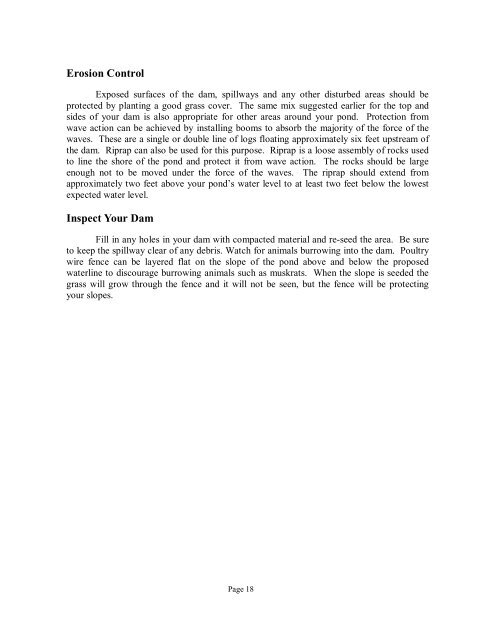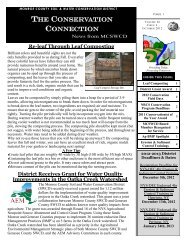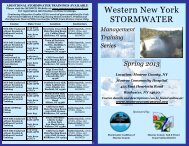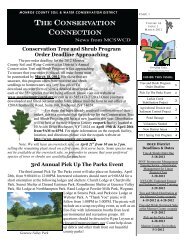Pond Uses, Site Selection, Design, Construction, and Maintenance
Pond Uses, Site Selection, Design, Construction, and Maintenance
Pond Uses, Site Selection, Design, Construction, and Maintenance
Create successful ePaper yourself
Turn your PDF publications into a flip-book with our unique Google optimized e-Paper software.
Erosion Control<br />
Exposed surfaces of the dam, spillways <strong>and</strong> any other disturbed areas should be<br />
protected by planting a good grass cover. The same mix suggested earlier for the top <strong>and</strong><br />
sides of your dam is also appropriate for other areas around your pond. Protection from<br />
wave action can be achieved by installing booms to absorb the majority of the force of the<br />
waves. These are a single or double line of logs floating approximately six feet upstream of<br />
the dam. Riprap can also be used for this purpose. Riprap is a loose assembly of rocks used<br />
to line the shore of the pond <strong>and</strong> protect it from wave action. The rocks should be large<br />
enough not to be moved under the force of the waves. The riprap should extend from<br />
approximately two feet above your pond’s water level to at least two feet below the lowest<br />
expected water level.<br />
Inspect Your Dam<br />
Fill in any holes in your dam with compacted material <strong>and</strong> re-seed the area. Be sure<br />
to keep the spillway clear of any debris. Watch for animals burrowing into the dam. Poultry<br />
wire fence can be layered flat on the slope of the pond above <strong>and</strong> below the proposed<br />
waterline to discourage burrowing animals such as muskrats. When the slope is seeded the<br />
grass will grow through the fence <strong>and</strong> it will not be seen, but the fence will be protecting<br />
your slopes.<br />
Page 18






